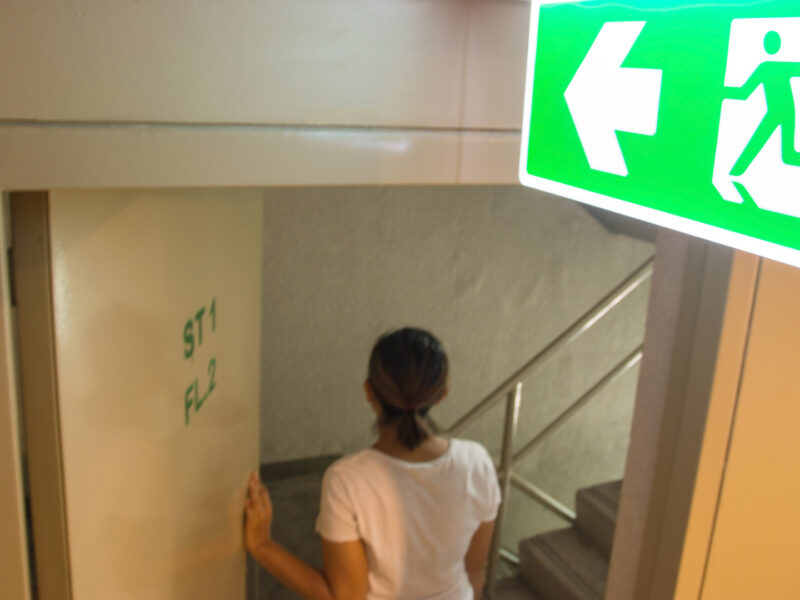What is a fire compartmentation survey?
A fire compartmentation survey is an assessment of the compartmentation of a building in respect of its suitability in containing smoke and fires, and protecting escape routes.
The objective is to assess whether the existing fire compartment walls (including the doors within them), as well as the floors and ceilings within the property are likely to restrict the potential spread of fire and smoke for the required period of time to enable safe evacuation.
What’s involved in a fire compartmentation survey?
Inspectas Fire Safety Services undertake comprehensive on-site surveys, including assessing the fabric of the building in detail and evaluating the compartmental resilience to the spread of both fire and smoke.
Our compartmentation surveys include:
- A thorough visual inspection of all areas where a fire could potentially spread. This includes assessing the condition of compartmentation features including walls, ceilings and floors and a detailed inspection of hard-to-access areas, including loft voids and air ducts.
- Assessment of fire-resistant materials used in construction to ensure these meet the required fire safety standards.
- Verifying that partition walls are fire-rated and provide adequate fire breaks.
Once it is completed, we’ll provide you with a written report including a plan of the area and an action plan detailing the required improvements.
If you wish, we can then arrange for one of our carefully selected construction and maintenance partners to carry out any work to bring you up to the required standards in the agreed time frames.
What is fire compartmentation, where is it required – and why is it vital?
Approved Document B, Volume 2 (2019) defines a fire compartment as:
- “A building or part of a building comprising one or more rooms, spaces or storeys constructed to prevent the spread of fire to or from another part of the same building or an adjoining building.”
- This is achieved through the provision of fire resisting walls and floors (that commonly offer between 30 minutes and 120 minutes fire resistance) and will include special measures to address any openings in the compartment lines, such as doors, glazing, service penetrations and ductwork.
- The walls or floors must remain functional for the duration of the designed fire resistance period.
- The compartment wall or floor should not crack or develop holes that allow flames, smoke or hot gases to pass through it, and if appropriate, it should maintain a suitable degree of insulation.
There are two key reasons why fire compartmentation is required:
1: Life Safety Protection
It is required for life safety purposes when protecting or sub-dividing escape routes, this may include external or internal means of escape. For example, escape corridors, stair enclosures including those with refuge areas, protected lobbies / firefighting shafts. Fire compartmentation provides occupiers of the building additional time to evacuate before escape routes are potentially compromised by the spread of smoke and fire. Crucially, it also serves to decrease the danger to which the Fire and Rescue Services may be exposed.
Compartmentation is also used to support specific fire evacuation strategies, such as a defend in place strategy in blocks of flats – where each flat is designed as its own fire compartment limiting the need for a full evacuation of a building in the event of a fire in one flat.
It may similarly be used to support progressive horizontal evacuation in healthcare buildings – were patients can be moved horizontally away from a fire into adjoining compartments and minimising the need for vertical evacuation of vulnerable patients and/or full evacuation of the entire building.
As well as this, compartmentation is employed to limit maximum compartment sizes in large premises such as warehouses.
2: Property Protection
It is required for property protection purposes as it will limit spread and attempt to contain the fire to the location it has originated, this is predominantly for enclosures housing special fire hazards such as plant rooms or other high risk rooms.
It may also be used to protect areas of high financial or strategic value, such as IT suites / server rooms or strategic storage spaces.
Where a building contains more than one occupier and the nature of their activities significantly different (for example residential premises sited over or alongside retail units) they are likely to require separating by compartment walls and floors to prevent a fire progressing to the other purpose group. This is the same case with walls common to two or more buildings.


















